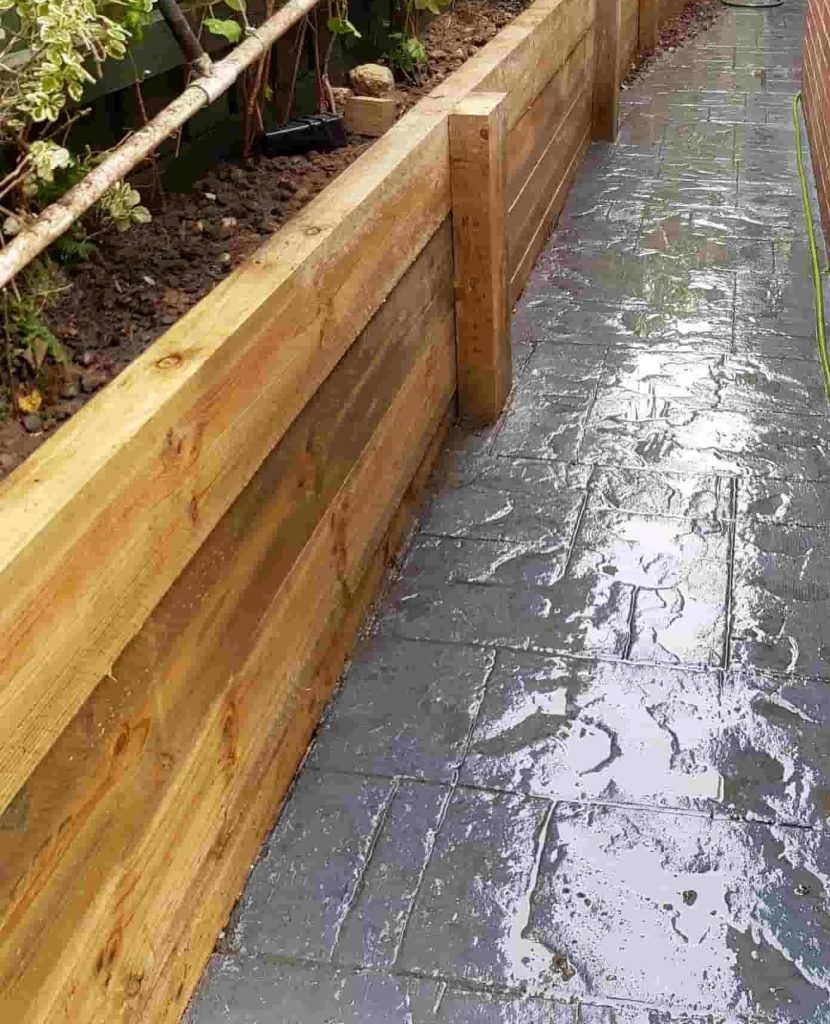Introduction
Building a retaining wall can be a challenging job-- one that needs careful planning, proficient labor, and, most importantly, the best materials. The type of material you choose for your retaining wall can considerably impact its resilience, look, and functionality. When you deal with a professional retaining wall installer, understanding these products becomes important to make sure that your financial investment stands the test of time. In this post, we'll dive deep into choosing the best products for your task, including wood sleepers, concrete sleepers, and H beams.
So buckle up; let's check out the world of retaining walls!
Choosing the Right Products with Your Retaining Wall Installer
When it comes to choosing the best products with your retaining wall installer, a number of factors enter into play. The place of your wall, the soil type, and regional climate conditions all influence which products will be most effective.
- Durability: Some products endure extreme weather much better than others. Aesthetics: Various materials offer numerous looks that can complement your property. Cost: Product prices can vary extensively; understanding budget constraints is crucial.
Understanding Your Site Conditions
Before diving into product choice, think about examining your site conditions:
Soil Type: Is it clay-heavy or sandy? Each soil type has different drain capabilities. Slope Degree: Steep slopes may require more robust materials. Water Drainage: Excellent drainage systems are crucial to prevent water buildup behind walls.Timber Sleepers: A Natural Choice
Timber sleepers are a conventional alternative that offers a rustic aesthetic while supplying appropriate support for many landscaping needs.
Benefits of Wood Sleepers
- Sustainability: Utilizing timber from sustainable sources can lessen ecological impact. Aesthetic Appeal: Lumber provides a warm look that blends well with natural surroundings. Ease of Installation: Light-weight and easy to work with.
Drawbacks of Wood Sleepers
While wood has its advantages, there are some disadvantages:
- Durability Issues: Lumber is vulnerable to rot and bug damage if not effectively treated. Maintenance Needs: Regular upkeep is needed to keep timber looking fresh and functional.
Concrete Sleepers: Strength Satisfies Versatility
If you're seeking durability and low maintenance in your retaining wall job, concrete sleepers might be the way to go.
Benefits of Concrete Sleepers
- Longevity: Concrete does not rot or get consumed by termites. Versatile Design Options: Offered in various colors and finishes. Strength: Provides excellent support for large soil masses.
Drawbacks of Concrete Sleepers
However, concrete sleepers likewise have some disadvantages:
- Installation Complexity: Much heavier than timber; requires professional setup skills. Cost Considerations: Typically more pricey than lumber options.
H Beams: The Backbone of Structural Integrity
For jobs needing substantial strength and stability-- especially in industrial applications-- H beams can work as an impressive choice for supporting maintaining walls.
Benefits of H Beams
Exceptional Load-Bearing Capacity: Suitable for high-load applications. Durability: Resistant to decay and damage from bugs or moisture. Flexibility in Style: Can be integrated into many architectural styles.Drawbacks of H Beams
On the other hand:
Higher Preliminary Cost: More expensive than timber or concrete options upfront. Installation Obstacles: Needs specialized understanding for appropriate installation.FAQs About Retaining Walls
1. What type of product is best for my region's climate?
The perfect product depends upon regional weather conditions; generally, concrete works well in wet climates while wood suits drier areas.
2. How do I know if I need a professional installer?
If your wall goes beyond four feet in height or includes intricate drain options, working with a professional is advisable.
3. Are there any regulations concerning maintaining walls?
Yes! http://cruzfencebusinesswmty894.tearosediner.net/retaining-wall-installation-do-it-yourself-vs-professional-aid Lots of municipalities have codes regulating height and building approaches; always check local guidelines before beginning your project.



4. Can I set up a retaining wall myself?
While do it yourself installations are possible for small walls utilizing basic products like wood sleepers, bigger tasks often require professional competence due to security concerns.
5. For how long will my retaining wall last?
The lifespan differs based upon products used; typically, concrete walls last over 50 years while treated timber might last about 20 years.
6. Do I require drainage behind my keeping wall?
Absolutely! Correct drainage prevents water buildup that could compromise structural integrity over time.
Conclusion
Choosing the best materials with your retaining wall installer isn't almost looks or expense-- it's also about guaranteeing durability and structural stability customized to specific site conditions. Whether you go with lumber sleepers' natural appeal or concrete sleepers' rugged strength-- or even H beams' unequaled strength-- the goal remains consistent: create an enduring barrier versus erosion while improving your landscape's beauty.
Each product serves its purpose depending upon numerous aspects such as budget constraints, local environment conditions, and visual choices. By collaborating carefully with a certified professional who understands these nuances, you'll ensure that you make notified choices leading to effective outcomes for your task!
With this guide in hand-- and after cautious consideration-- you're now better prepared to start this interesting journey toward building an efficient and aesthetically attractive maintaining wall!